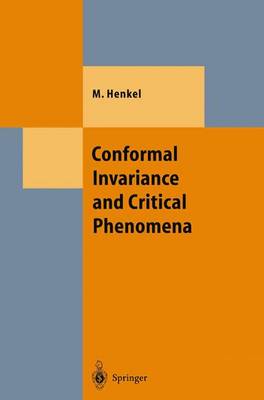Theoretical and Mathematical Physics
3 total works
"The career structure and funding of the universities [...] currently strongly d- courages academics and faculties from putting any investment into teaching - there are no career or ?nancial rewards in it. This is a great pity, because [...] it is the need toengage indialogue,and to makethings logicaland clear,that istheprimary defence against obscurantism and abstraction. " B. Ward-Perkins, The fall of Rome, Oxford (2005) This is the ?rst volume of a planned two-volume treatise on non-equilibrium phase transitions. While such a topic might sound rather special and a- demic, non-equilibrium critical phenomena occur in much wider contexts than their equilibrium counterparts, and without having to ?ne-tune th- modynamic variables to their 'critical' values in each case. As a matter of fact, most systems in Nature are out of equilibrium. Given that the theme of non-equilibrium phase transitions of second order is wide enough to amount essentially to a treatment of almost all theoretical aspects of non-equilibrium many-body physics, a selection of topics is required to keep such a project within a manageable length. Therefore, Vol.
1 discusses a particular kind of non-equilibrium phase transitions, namely those between an active, ?- tuating state and absorbing states. Volume 2 (to be written by one of us (MH) with M. Pleimling) will be devoted to ageing phenomena.
1 discusses a particular kind of non-equilibrium phase transitions, namely those between an active, ?- tuating state and absorbing states. Volume 2 (to be written by one of us (MH) with M. Pleimling) will be devoted to ageing phenomena.
Critical phenomena arise in a wide variety of physical systems. Classi cal examples are the liquid-vapour critical point or the paramagnetic ferromagnetic transition. Further examples include multicomponent fluids and alloys, superfluids, superconductors, polymers and fully developed tur bulence and may even extend to the quark-gluon plasma and the early uni verse as a whole. Early theoretical investigators tried to reduce the problem to a very small number of degrees of freedom, such as the van der Waals equation and mean field approximations, culminating in Landau's general theory of critical phenomena. Nowadays, it is understood that the common ground for all these phenomena lies in the presence of strong fluctuations of infinitely many coupled variables. This was made explicit first through the exact solution of the two-dimensional Ising model by Onsager. Systematic subsequent developments have been leading to the scaling theories of critical phenomena and the renormalization group which allow a precise description of the close neighborhood of the critical point, often in good agreement with experiments. In contrast to the general understanding a century ago, the presence of fluctuations on all length scales at a critical point is emphasized today. This can be briefly summarized by saying that at a critical point a system is scale invariant. In addition, conformal invaTiance permits also a non-uniform, local rescal ing, provided only that angles remain unchanged.
Non-Equilibrium Phase Transitions: Volume 2: Ageing and Dynamical Scaling Far from Equilibrium
by Malte Henkel and Michel Pleimling
Published 1 January 2010

